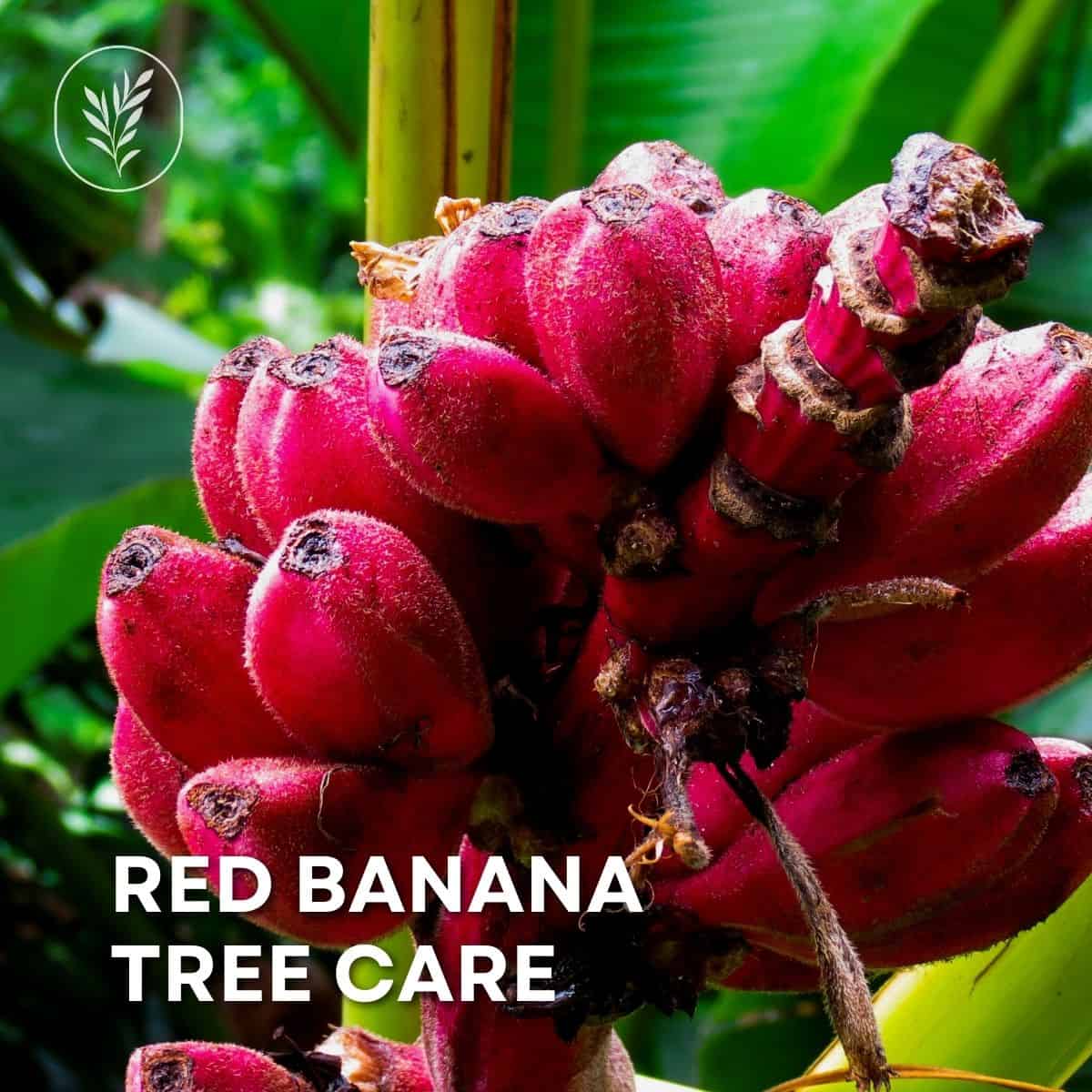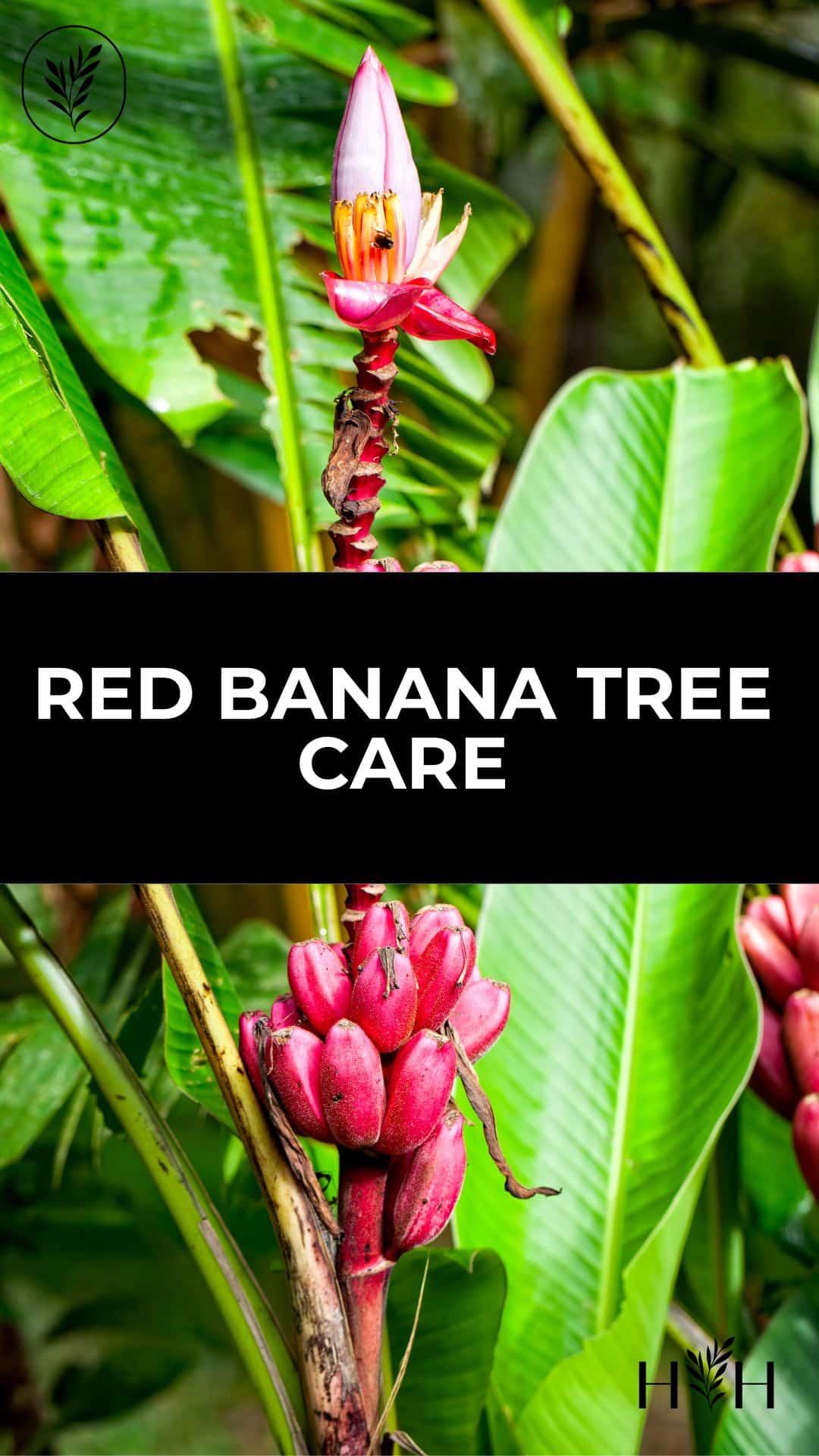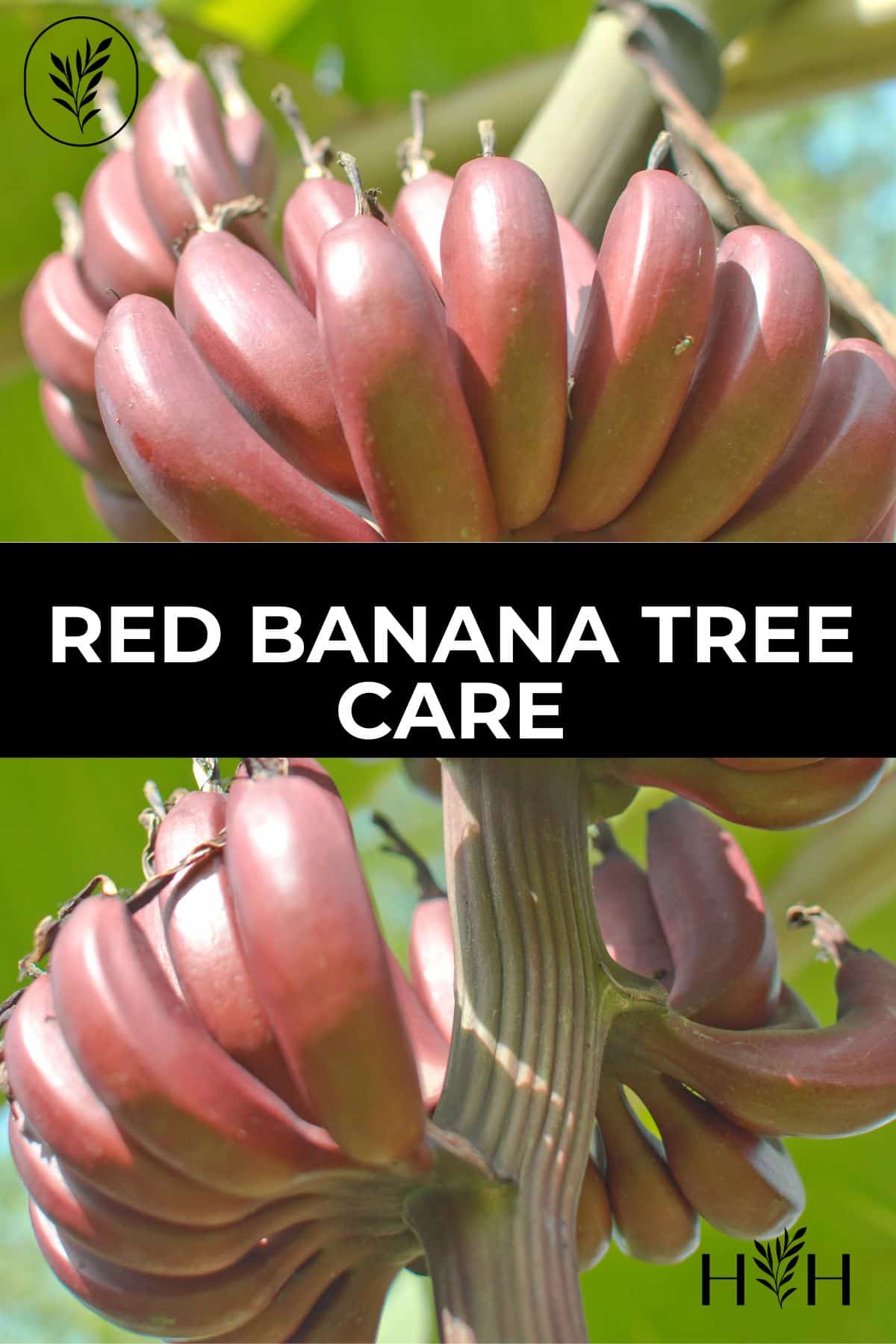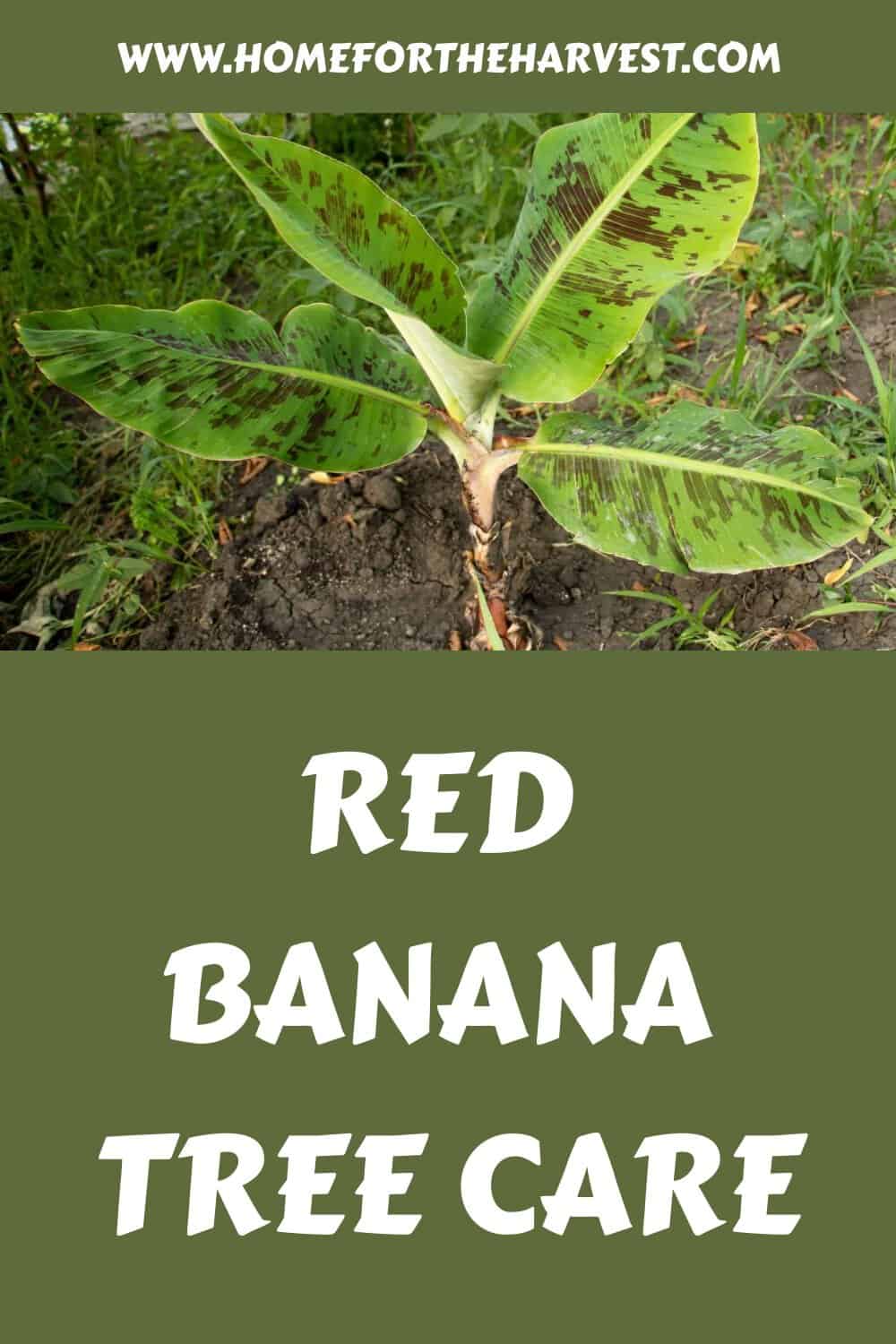Gardening is a great way to relax and get in touch with nature, but it can also be quite daunting. Red banana tree care requires attention to detail, patience and an understanding of the basics. But don’t worry if you’re not an expert – we’ll help ensure your red banana trees thrive.
Red banana tree care basics
Red banana trees are a beautiful addition to any ornamental garden, and with the right care, they can provide years of enjoyment. These banana plants don’t produce fruit and are instead grown for their lush tropical foliage. Popular varieties of red bananas include ‘Rojo’, ‘Zebrina’, ‘Bordelon’, and ‘Siam Ruby’.
Choose an area that receives full sun or partial shade and has well-draining soil. Dig a hole twice as wide as the root ball and just deep enough so that when you place it in the ground, it’s at the same level as before planting. Backfill around the roots with soil, then water thoroughly to settle them into their new home.
Watering your red banana tree regularly is essential for healthy growth and fruit production. Water deeply once or twice per week depending on weather conditions – more often during hot spells, less often during cool periods – until established (about one year). Then reduce watering frequency but increase amount each time you water; this encourages deeper root growth which will help protect against drought stress later on.
Fertilizing your red banana tree helps ensure good health. Feed every two months from spring through summer using a balanced fertilizer, and follow label instructions for dosage amounts based on size of plant/tree being fertilized. For best results apply fertilizer when plants are actively growing (not dormant) and water after application to move nutrients down into soil where roots can access them easily.
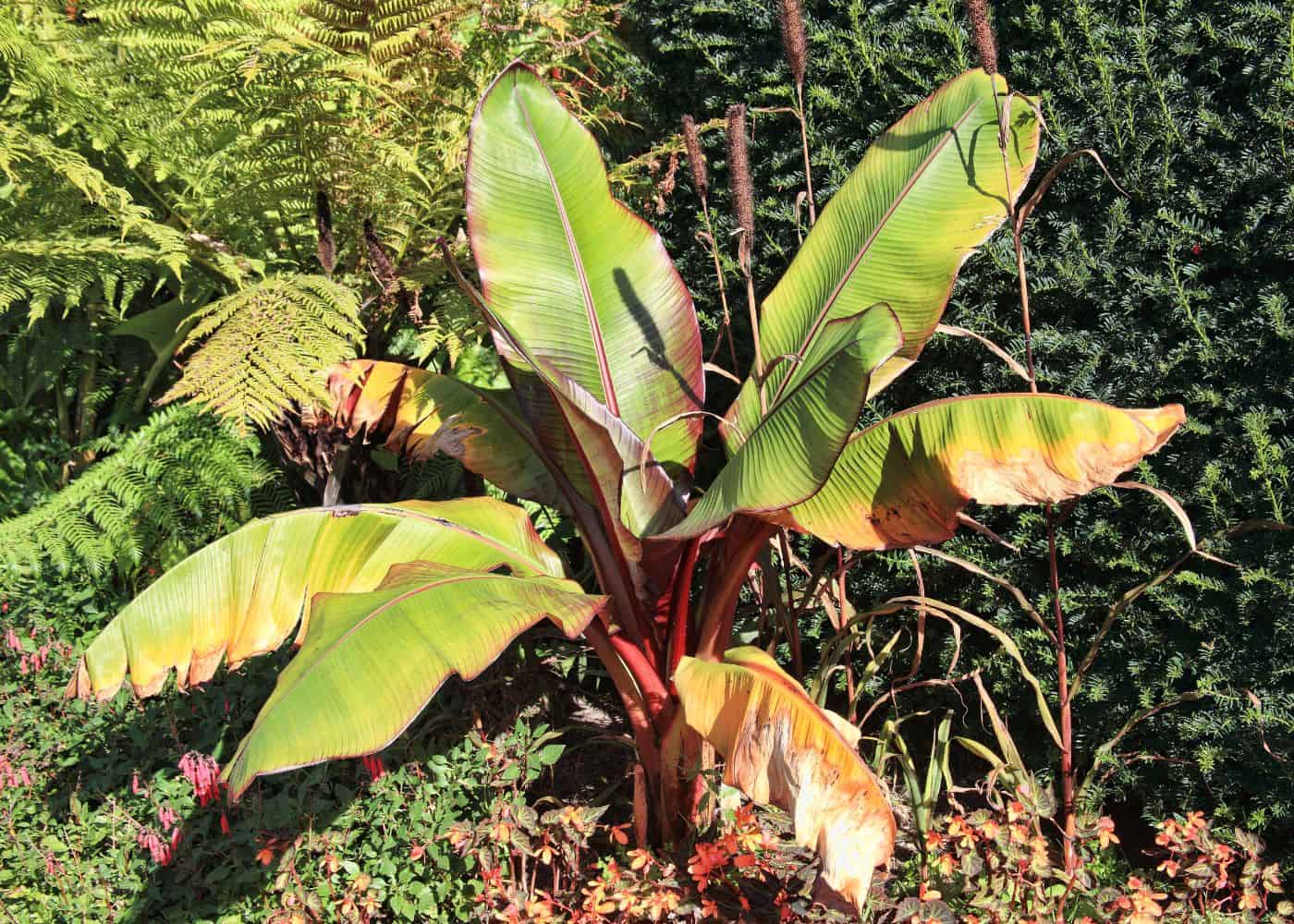
Planting
The best time to plant a red banana tree is in the spring or early summer. This will give it plenty of time to become established before winter arrives. When selecting a location for your red banana tree, choose an area that receives full sun and has well-draining soil. If necessary, amend the soil with compost or other organic matter to improve drainage and fertility.
Before planting, dig a hole twice as wide as the root ball of your tree and just as deep. Place the tree in the center of the hole so that its roots are spread out evenly on all sides. Backfill with native soil mixed with compost if needed and tamp down lightly around the base of your tree after planting it firmly into place. Water thoroughly until moist but not soggy at least once per week during dry periods throughout its first growing season to help establish strong roots for future growth and health
Once your red banana tree is planted, it’s time to start caring for it properly. With proper watering and fertilization, you can ensure that your red banana tree will thrive and bring beauty to your garden.
Watering ornamental banana plants
Watering your red banana tree is essential for its health and growth. The amount of water needed depends on the climate, soil type, and age of the plant. Generally speaking, young plants need more frequent watering than mature ones. In general, it’s best to water deeply once a week in hot climates or twice a week in cooler climates during the growing season. During dry spells or extreme heat, you may need to increase this frequency slightly.
When watering your red banana tree make sure that you saturate the entire root zone with each irrigation session; this will ensure that all parts of the root system are getting enough moisture. Water slowly so that it has time to soak into the soil rather than running off quickly; if necessary use several short sessions instead of one long one to achieve saturation. If possible avoid overhead sprinklers as they can cause leaf spotting from fungal diseases due to wet foliage staying too long on leaves after irrigation ends .
It’s important not to over-water your red banana tree as well; too much water can lead to root rot and other problems, such as nutrient deficiencies caused by leaching out vital minerals from the soil when overwatering occurs frequently over extended periods of time.
To prevent this issue, keep an eye on drainage: if there is standing water around roots after 30 minutes, then reduce the frequency or duration of irrigations until drainage improves again before continuing the regular schedule. Also, be aware that clay soils tend to retain moisture longer than sandy soils, so adjust accordingly depending on what kind of soil you have in the garden bed where your red banana tree grows.
Watering your red banana tree is essential for its health and growth, but be sure not to overdo it; too much water can lead to root rot. Now let’s look at how fertilizing your tree can help keep it healthy.
Fertilizing
Fertilizing your red banana tree is an important part of its care. Fertilizer helps to provide the nutrients needed for healthy growth and development, as well as aiding in flowering and fruiting. The type of fertilizer you use will depend on the age and size of your tree, so it’s important to read the label carefully before applying any product.
Organic fertilizers are a great choice for red banana trees because they release their nutrients slowly over time, providing long-term nourishment without burning or damaging roots. For young trees that have just been planted, a balanced slow-release organic fertilizer at planting time and then again every few months during the growing season.
For mature trees that are actively growing, a high nitrogen fertilizer such as blood meal or alfalfa meal should be used once per month during spring and summer months when temperatures are above 70 degrees Fahrenheit (21 Celsius). Apply these fertilizers around the base of the tree but not too close to the trunk; this will help prevent root burn from concentrated salts in chemical fertilizers. Avoid using synthetic chemical fertilizers altogether since they can damage delicate root systems with their harsh chemicals.
Pests & diseases
Unfortunately, these plants can be susceptible to pests and diseases that can cause damage or even kill the tree if left untreated. Knowing how to identify and prevent common issues is key to keeping your red banana tree healthy and happy.
One of the most common pests affecting red banana trees is aphids. These small insects feed on the sap of leaves, causing them to yellow and curl up at the edges. To get rid of aphids, you can use insecticidal soap or neem oil sprays which will help control their population without harming beneficial insects like bees or butterflies. It’s also important to keep your plant well-watered so it doesn’t become too stressed out by drought conditions which could make it more vulnerable to infestations.
Another pest that may affect your red banana tree is mealybugs. These tiny white bugs suck on plant juices and secrete a sticky substance called honeydew which attracts ants and encourages mold growth on foliage surfaces below them. Mealybugs should be treated with horticultural oils or insecticidal soaps applied directly onto affected areas of the plant – but remember not to spray during hot weather as this could burn delicate foliage.
Fungal diseases such as leaf spots can be a problem for red banana trees if they don’t receive enough sunlight or air circulation around their leaves, particularly in humid conditions where spores spread quickly. To treat this issue, it is important to prune away any infected parts immediately before applying fungicides containing copper sulfate pentahydrate (CSP) mixed with water according to the manufacturer’s instructions. It is essential to wear protective clothing when handling chemicals of this nature.
Finally, root rot caused by Phytophthora spp fungi affects both indoor potted plants as well as outdoor ones in damp soil conditions – look out for wilting leaves due to lack of water uptake from damaged roots. If you suspect root rot has taken hold then try repotting into fresh potting mix while removing all traces of old soil first; this should help reduce further infection spreading throughout other parts of your beloved red banana tree.
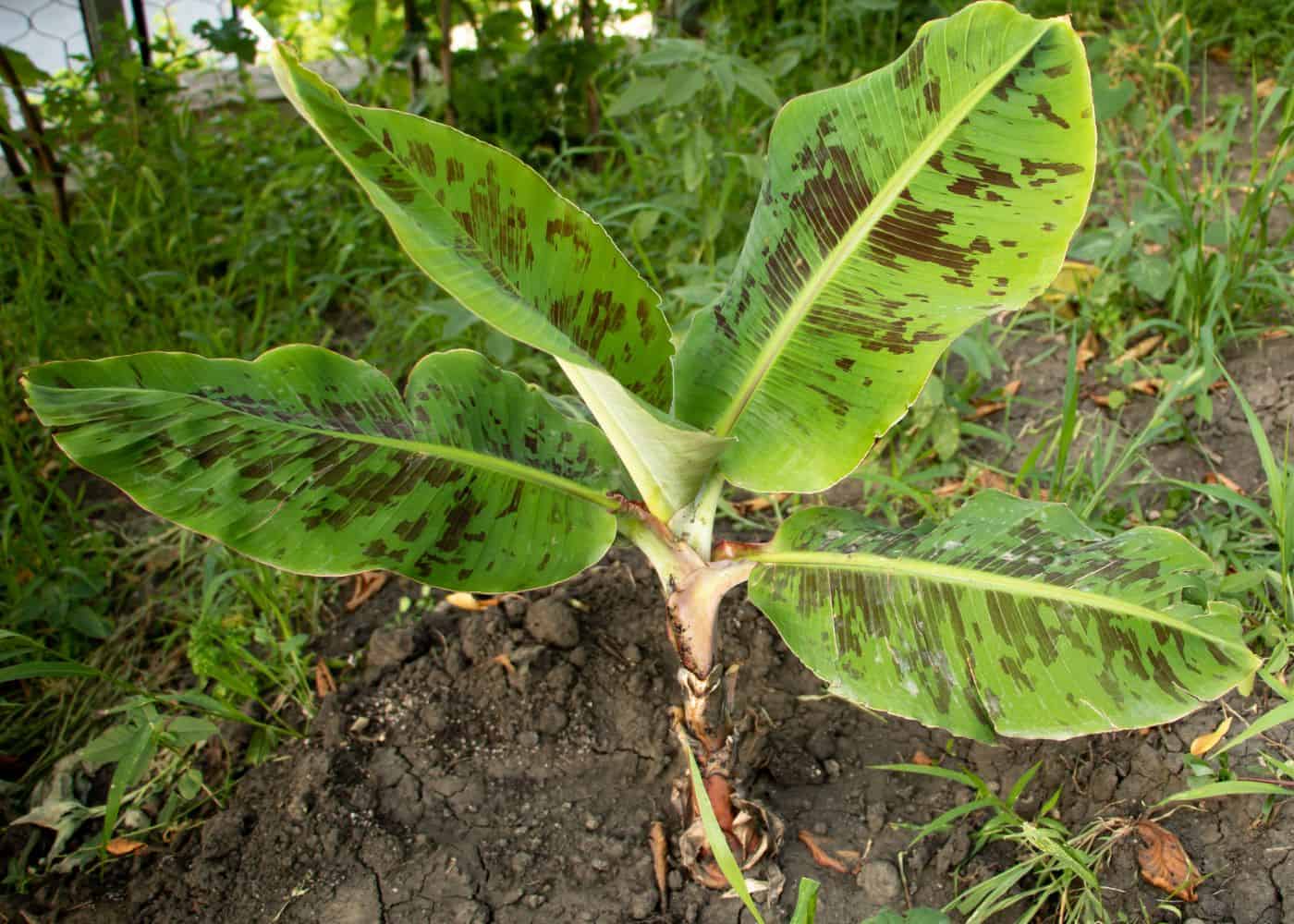
FAQs for red banana tree care
Can red banana trees take full sun?
Yes, red banana trees can take full sun. They are tropical plant and thrive in warm climates with plenty of direct sunlight. Red bananas require at least 6 hours of direct sunlight each day to grow properly. It is important to note that the leaves may burn if exposed to too much intense light, so it is best to provide some shade during the hottest parts of the day for optimal growth.
How do you protect a red banana tree in the winter?
To protect a red banana tree in the winter, it is important to provide adequate insulation. This can be done by wrapping the trunk and lower branches with burlap or other breathable fabric. Additionally, mulching around the base of the tree will help insulate its roots from cold temperatures. If possible, move your red banana tree indoors during extreme cold weather and make sure it receives plenty of light and water throughout the winter months. With these steps taken, you can ensure that your red banana tree survives through even the harshest winters.
Before you go…
In conclusion, red banana tree care is an important part of having a healthy and beautiful garden. With the right planting, watering, fertilizing, and pest control techniques, you can ensure that your red banana tree will thrive for years to come.
Resources
- How fast does a banana tree grow?
- When do banana trees bear fruit?
- How do banana trees grow?
- Should you cut dead leaves off banana trees?
- How to plant a banana tree in 4 easy steps
- How to fertilize banana trees for high yields
- How to prune banana trees?
References
- Stewart, M. (2022, November 7). How to Care for a Banana Leaf Plant, Which Will Add Tropical Flair and Color to Sunny Rooms in Your Home. Martha Stewart. Retrieved February 17, 2023, from https://www.marthastewart.com/8335768/how-to-care-for-banana-leaf-plant
- Bous, S. (2022, October 18). How to Grow and Care for a Banana Plant Indoors. Better Homes & Gardens. https://www.bhg.com/gardening/houseplants/care/how-to-grow-a-banana-plant-indoors/
- Cape, M. (2019). How to Grow Banana Plants Like a Professional: Beginner’s Guide and Tips to Get You Started. Independently Published.
- Soluri, J. (2021). Banana Cultures: Agriculture, Consumption, and Environmental Change in Honduras and the United States. University of Texas Press.
Need more info?
Are you interested in learning more about banana tree care? Here are our best articles about it!


